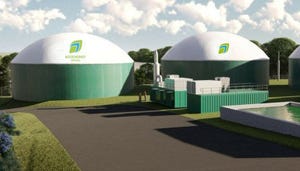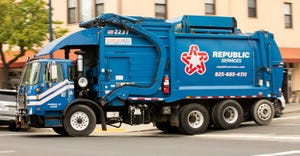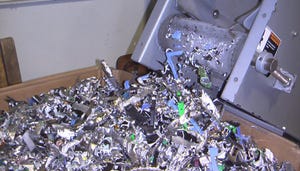It's in the Bag
October 1, 2005
Ziad Mazboudi Solid Waste Coordinator San Juan Capistrano, Calif.
WHEN SAN JUAN CAPISTRANO, CALIF., was faced with state legislation mandating a 50 percent solid waste diversion rate, city officials knew they had to develop additional recycling programs for the city to comply. What they did not know was that a creek cleanup would inspire them to implement a plastic bag recycling program.
San Juan Capistrano, a city of about 35,000 in Orange County, has programs to protect its creeks and the Pacific Ocean located about two miles downstream. When pollutants reach the ocean, beach closures, which hurt the city's merchants and restaurants, can occur.
So, San Juan Capistrano cleans its storm drain system regularly and holds creek cleanup events annually. During the cleanups, officials discovered that plastic bags were prevalent in creeks and catch basins. The city needed a way to reduce plastic bag littering and simultaneously increase its waste diversion rate.
City staff met with plastic bag manufacturer Hilex Poly, Hartsville, S.C., and CR&R, San Juan Capistrano's locally based solid waste services provider, to discuss a partnership to reduce bag litter and to promote recycling. The program had to be easy to implement, simple for residents to use, and the bags needed to be easily recovered at CR&R's mixed-refuse recycling facility.
The city decided on home-based collection for the plastic bag recycling program, which includes bags from grocery stores, other retail stores and dry cleaners. Residents received a 4-gallon collection bucket lined with blue bags. They place plastic bags in a blue bag. On their regular trash day each week, residents tear the blue bag from the bucket and place it in their curbside recycling bins for pickup by CR&R.
Once the bags arrive at the company's recycling facility, they are separated from the other recyclables, baled and shipped to Hilex Poly's manufacturing facility in Indiana, where they are turned into new plastic bags. The bag manufacturer is covering the program's cost.
To launch the program, named Bag 2 Bag, the city distributed press releases and placed full-page ads in local newspapers. In addition, a postcard explaining the plastic bag recycling process was mailed to all single-family homes in San Juan Capistrano. A week before the program's start in March 2005, the city sent each household a flyer with a message from the mayor encouraging residents to join the program.
The program has been well received by the community. As the first city in the state to start a plastic bag recycling program, San Juan Capistrano's program is being used as a model. Neighboring cities San Clemente and Dana Point have started their own programs by following San Juan Capistrano's exact process.
Still, the number of bags San Juan Capistrano has received has not been as high as expected. The city intends to promote the program more through educational material that encourages plastic bag recycling. Starting a school plastic bag collection competition — similar to soda can recycling programs that some schools implement — to increase awareness of the recycling program is also being considered.
Although progress is slow, San Juan Capistrano plans to continue the program to try to increase its waste diversion rate. Undoubtedly, some residents might never want to bother with plastic bag recycling. But the more the city promotes the concept, and as more cities get on board, the more plastic bag recycling will become second nature to everyone.
You May Also Like


